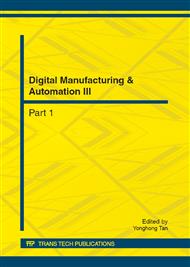p.1282
p.1286
p.1290
p.1295
p.1302
p.1306
p.1311
p.1317
p.1321
Effect of Mass Flow Rate of Working Fluid on Performance of Capillary Porous Wick Evaporator with Bayonet Tube for AMTEC
Abstract:
An axial symmetric invariable temperature phase change interface model is established to investigate numerically the effect of mass flow rate of working fluid on performance of capillary porous wick evaporator with bayonet tube for alkali metal thermal-to-electric converter (AMTEC) system. The numerical results reveal that the temperature of working fluid in the wick and liquid channel decreases with increasing the mass flow rate. The suitable structure of bayonet tube is dependent on the mass flow rate of working fluid. The bayonet tube having larger wall thermal resistance is selected for the smaller mass flow rate of working fluid, and vice versa. Also, the flow in the liquid channel is greatly affected by the mass flow rate of working fluid in comparison with the capillary porous wick evaporator without bayonet tube.
Info:
Periodical:
Pages:
1302-1305
Citation:
Online since:
July 2012
Authors:
Price:
Сopyright:
© 2012 Trans Tech Publications Ltd. All Rights Reserved
Share:
Citation:


